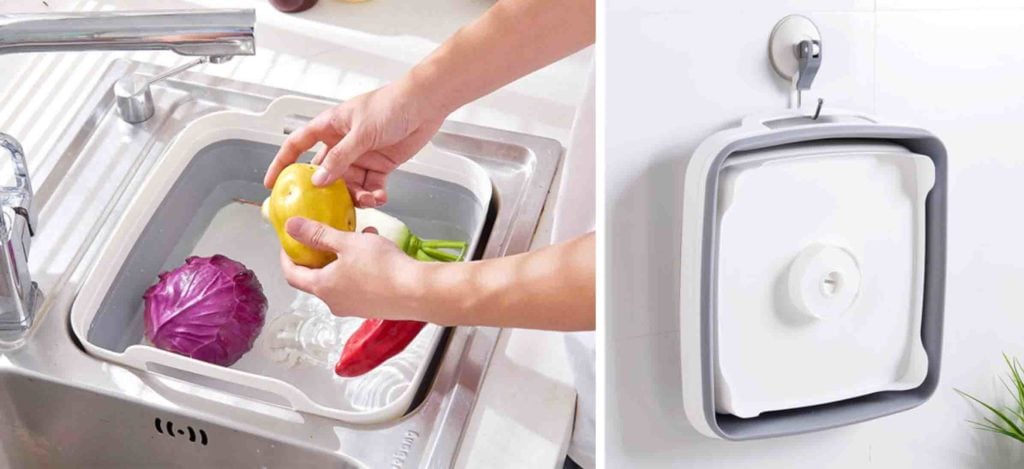While more homeowners are gaining awareness of the sustainable living and zero-waste movement, it is limited to the popular movements of bringing your own reusable shopping bags and reducing single-use straws.
Previously, we asked on Instagram stories if you’ve had any burning questions on how to live sustainably as a homeowner. To provide you with relatable tips in the Singapore context, we chatted with a sustainability advocate, Charlotte Mei in this StyleChats series! She shares actionable solutions you as a homeowner can follow to slowly embark on a greener life at home.
Stay on to find out how she does it!
But first, who is Charlotte Mei?
Charlotte Mei is a Singapore-based nutritionist, host, presenter and a strong advocate for sustainable living. She wants the movement to be seen as something normal and accessible to the public, not an exclusive lifestyle.
A self-taught cook too, she has a Youtube channel, TheCharlotteMei, where she shares tasty, nutritious, and fuss-free recipes — showing people that it is possible to whip up simple and healthy dishes at home.
1. What do these 3 phrases ‘sustainable living, being eco-friendly and zero-waste living’ mean to you?
All in all, it means living with as little impact as you can, to live consciously, being aware about our surroundings, and understanding that it is as much ours, as it is for other people. Since young, my dad always showed me how to care for the environment.
We’d go on walks in the park and if there was trash on the ground, he’d ask me to pick it up. As a kid, I’d say “But that’s not mine”, and he taught me that the environment may not be mine, but it was a public space for others. He also told me that if everyone had the mentality of “Oh, that’s not my problem,” then we’d end up in a very terrible space.

Image source: Straits Times
So, what these phrases mean, are being conscious of what we consume, of what we produce, and the demand we create.
2. How do you store and dispose daily waste (both dry and wet waste) in a household in an environmentally friendly manner without obtaining plastic bags from supermarkets/stores?
Disposing of daily waste is a tough one especially in Singapore. A lot of people think “Okay, yes, plastic is the culprit.” True, but in a place like Singapore where we have to bag our waste, there are no 2 ways around it.
There are solutions. We can still make our very own trash bags, such as out of newspapers. There’s a Youtube video tutorial where a little girl shows you how to fold a waste bin out of newspapers.
Psst! We tried out the method and here’s a step-by-step tutorial on how to create your own dustbin liner out of newspapers!
But I mean, it also has to be practical and sustainable for everyday living. Sustainable, in that we all feel that it’s doable and it’s not hindering everyday activities. So, there is that for those who want to try it.
It’s fine to use plastic bags in Singapore, because we don’t have a choice around it, but I do my best to reject plastic bags. For example, we don’t need the tiny ones from when we buy kopi, or bubble tea, or the square ones we get from BreadTalk or Watsons that are not usable. These are the bags we want to reject as much as possible.

Image source: Straits Times
I also try to be as creative as possible about the use of my plastics. Someone recently gave me a packet of oats in a Ziploc bag. Once I finished the oats, the Ziploc bag was my trash bin. When I buy a loaf of bread, I use the packaging as my trash bag too.
It’s about looking to different sources to use. Once I stopped using plastic bags from the supermarket, I looked to random bits of plastic to bag my trash. I got to the point where I was like, “Wow! I’ve ran out of things to bag my trash,” so I started shopping for plastic bags again, but it was always one at a time. I don’t collect plastic bags anymore.
This is the extent to which I’ve rejected plastic bags, but the truth is, we need them for our trash. It’s about being mindful about what types of bags we take, how many of them, and how we use it. I always use each bag to its maximum.
I also used to have a bin, an open-air bin. It doesn’t have a lid on it. I went to get one that has a lid on it because I realised I’ve been throwing out my trash even when my bag isn’t full, so with a bin that has a lid on it, it keeps things a bit more hygienic.
3: What’s your 3Rs routine at home like?
It’s absolutely a part of my everyday moments. At home, I use napkins instead of boxed tissue paper, and I no longer use disposable kitchen towels in the kitchen. But instead, I have these small little cotton squares that I use to wipe off any spills on the tabletop.
With paper, there is so much you can do to reuse and repurpose them! With every letter I receive in the mail, I add it to my ever-growing pile of scrap paper that then becomes my notepad!
The thing about recycling is that you have to be quite diligent. For example, anything that previously contained food should be rinsed out before they can go into the recycling bin.
As you know, I cook a lot, so for any glass jars like jams or tomato sauces jar I get at the supermarket, I always remove the tags. I used to keep them to repurpose as storage jars, but now I’ve collected way too many, so I donate them to Unpackt, a zero-waste bulk store. When shoppers forget to their own containers or jars, they can use those instead.

Image source: @thecharlottemei
Speaking of glass jars, when I’m purchasing things, I’m very aware of what it is packaged in. I’d definitely choose something in a glass jar over a plastic jar any day.
4. Do you have any tips or recipe ideas on using food that is past the ‘Best by’ or ‘Use by’ date?
If your food is past these dates it’s always good to use your 3 senses to test whether or not the food is good. Use your eyes to see if it looks okay, smell the food, and taste a tiny bit of it.
For certain foods like bread, bananas, or certain fruits that look like they’re going bad, it’s always a good idea to pop them into the freezer to extend their shelf life.
5. Any simple habits I can cultivate to create an eco-friendly home despite a busy working schedule?
Take a look at your everyday habits — What do you use a lot of? What can you cut down? What can you be a bit more conscious about?
If you’re a person that works in an office, it’s not that complicated. Bring a food container, a reusable cup, and a set of reusable cutlery to work — they will always come in handy especially since food and drinks that are bought for ‘take away’ tend to come in single use plastic or styrofoam.
So many places actually offer discounts for bringing your own items. My favorite place right now is Joe & Dough, because they give a $0.50 discount! For people who go to BreadTalk or Four Leaves to buy bread back home, bring a huge food container, or get a reusable silicone bag.
As for living an eco-friendly life at home, there are a few things you can do. If you’re washing vegetables or fruits, do it over a bowl, so you can pour the used water over your plants. Try to do your laundry on full load, and air-dry your clothes as much as you can, instead of using the dryer. It’s better for your fabrics that way too!
One thing I did which I’m proud of myself for, is using one of my cotton cloths for my Magiclean, instead of their non-biodegradable ones. After each cleaning session, I wash the cloth and reuse it again. Some people may think it’s unsanitary to reuse the cloth in this instance, but I tell them that’s we do the same thing you do with underwear!
6. Do you have any go-to donation, recycling drives/places you would recommend to homeowners?
I actually try as much as possible not to donate things, because most of the time they may not be needed by the receiving communities.
For damaged clothes, I drop it off at the H&M recycling bin. You get a 15% voucher for that, but since I have no use for it, I usually pass it to the first person in the queue, so that also makes someone’s day. For food, there’s The Food Bank with several collection points around Singapore. There are also bins around Singapore for depositing e-waste. You can also consider donating to Women’s Homes that accept donations.

Image source: The Food Bank
If my clothes/bags are in good condition, I drop them off at The Fashion Pulpit. I also use lots of Facebook groups, and my favourite is 1st Dibs, Zero Waste. It’s a great place to share things you no longer have use for. For example, if there’s something you’re looking out to buy, you can put a call out in the group, and someone will answer to your message and lend it to you. I’ve lent someone a luggage, I’ve given someone a watering can, and a few folders as well.
7. Some might feel that it’s a hassle to prepare meals daily. Sometimes, working hours can be a hindrance too. What’s your advice for these scenarios?
Everyone has their different schedules and different priorities. If you’re someone who likes bulk cooking, you can set aside 2 hours on a Sunday to cook a huge stew, or prepare 4 different dishes you can keep for the week, and eat as you go along. Alternatively, cook a large portion of dinner and set some aside for lunch the next day.

Image source: TheCharlotteMei
There are definitely several ways around this, but don’t be too hard on yourself! If you want to pack meals from home, there are certain foods that will help you save time. Ayam Brand’s mackerel and tuna are great, as they don’t use preservatives. Making a sandwich or one-tray bake, for example, would be better than doing 3 different dishes over a stove.
Cooking Tip: If you’re still unsure on how to get started with making these recipes, here’s a video from Charlotte, showing her recipe for Tuna Pizza, made with canned tuna!
We hope this StyleChats with Charlotte Mei gave some interesting tips and actionable methods on how to live a greener lifestyle at home. Is there any new one that you’re adopting? Share with us in the comments below!




